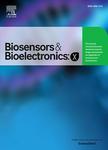版权所有:内蒙古大学图书馆 技术提供:维普资讯• 智图
内蒙古自治区呼和浩特市赛罕区大学西街235号 邮编: 010021

作者机构:Department of Microelectronics Nankai University Tianjin300350 China Department of Traditional Chinese Medicine Tianjin Central Hospital of Gynecology Obstetrics Nankai University Tianjin300199 China Department of Pathophysiology Shanxi Medical University Taiyuan Taiyuan030001 China Tianjin Key Laboratory of Optoelectronic Sensor and Sensing Network Technology Tianjin300350 China Smart Sensing Interdisciplinary Science Center of Nankai University Tianjin300350 China
出 版 物:《Biosensors and Bioelectronics: X》 (Biosens. Bioelectron. X)
年 卷 期:2022年第11卷
核心收录:
基 金:This work was supported by the National Natural Science Foundation (Grant NOs. 61871240 61471207 82004409 )
主 题:Nanostructures
摘 要:In vitro diagnostics with biochemical sensors are one of the most important technologies for medical diagnosis and the examination of human health. With the improvement of people s living standards, the demand for in vitro diagnostics is increasing, and the requirements for the performance of biochemical sensors are also getting higher. Compared to other biochemical sensors, photoelectrochemical sensors based on heterogeneous nanostructures have excellent light absorption ability and electron transfer performance, and are powerful alternatives for the detection of chemical substances and biochemical molecules for in vitro diagnostics. And this is the main reason why they are a hot topic among relevant analytical methods. However, comprehensive and detailed analyses based on these sensors are rarely reported, especially for in vitro diagnostics, so a complete review of this field is necessary. This review outlines the advantages and disadvantages of various current sensors and further demonstrates the superiority of photoelectrochemical sensors based on heterogeneous nanostructures by comparison. In addition, a detailed classification, introduction of principles and analysis of synthesis methods of heterogeneous nanostructured photoelectrochemical sensors are presented. Based on the above analysis, a detailed description of the use of this type of sensor for in vitro diagnosis of inorganic and organic (micromolecules and macromolecules) molecules in recent years is presented. Predicting and combating relevant diseases are realized by in vitro detection of molecules. Finally, it paves the way for subsequent researchers in the process of realizing practical applications of photoelectrochemical sensing based on heterogeneous nanostructures. © 2022 The Authors